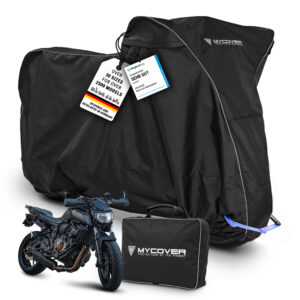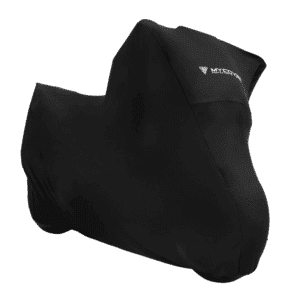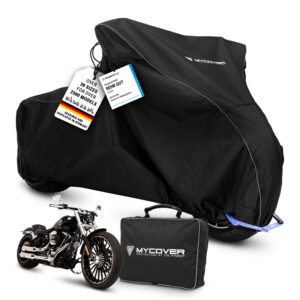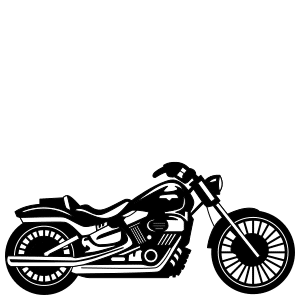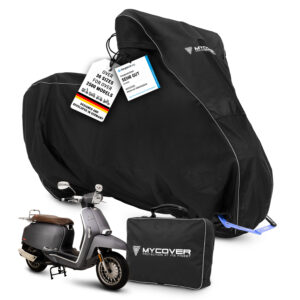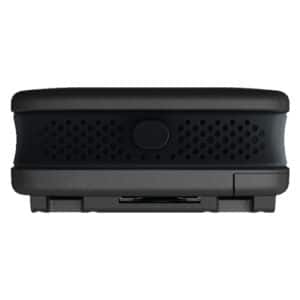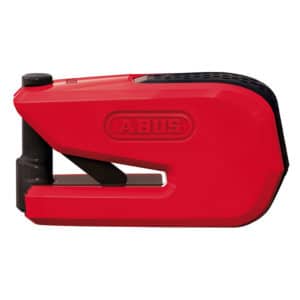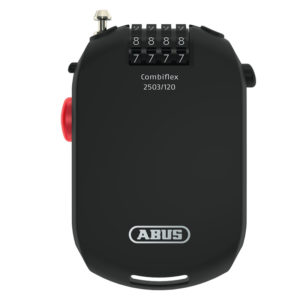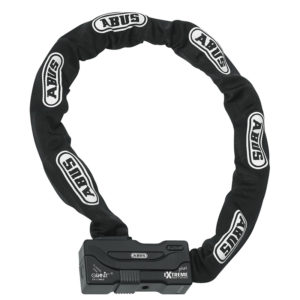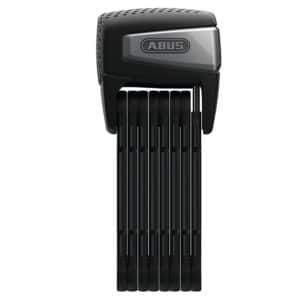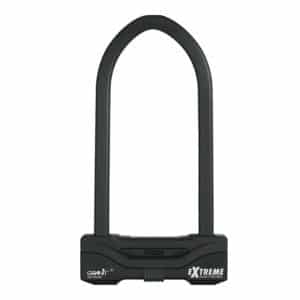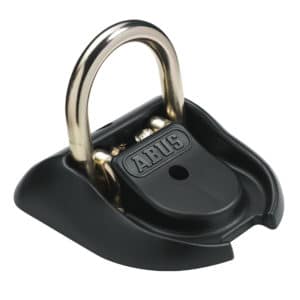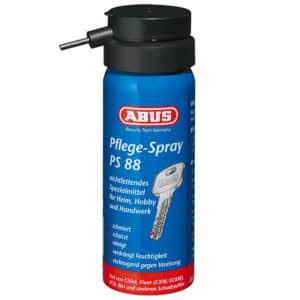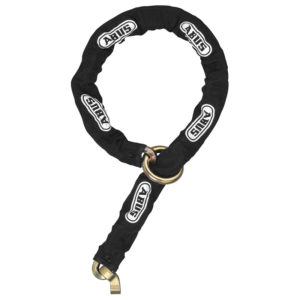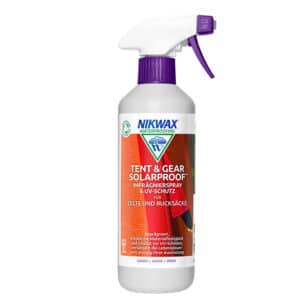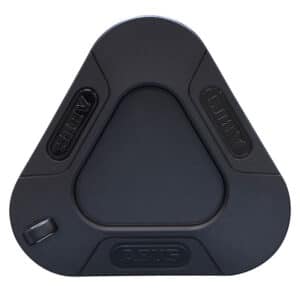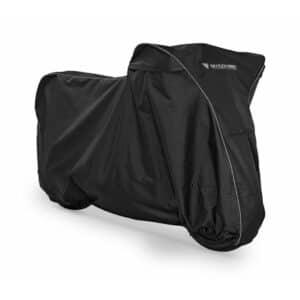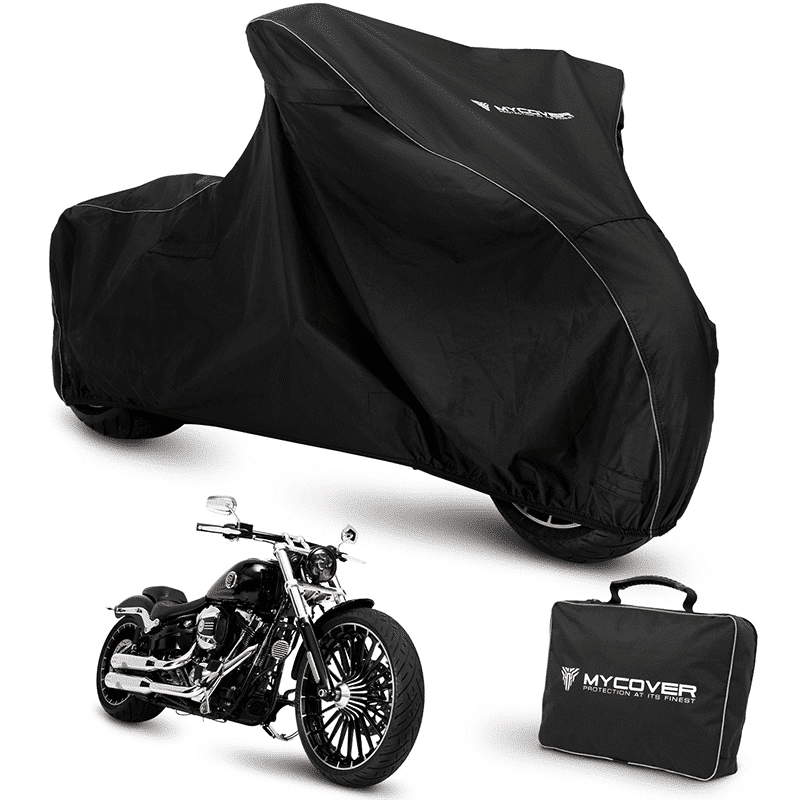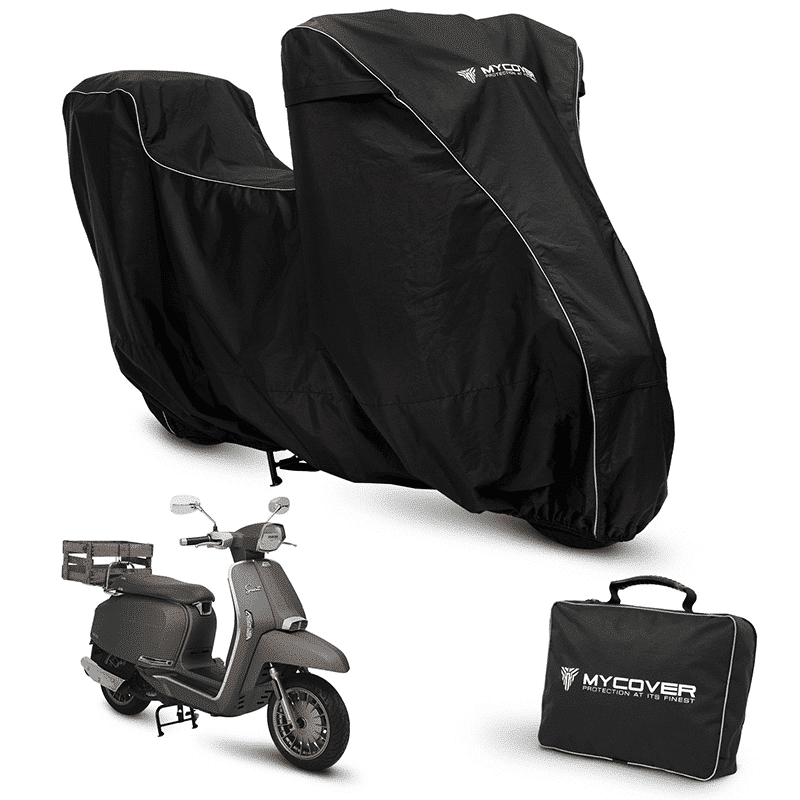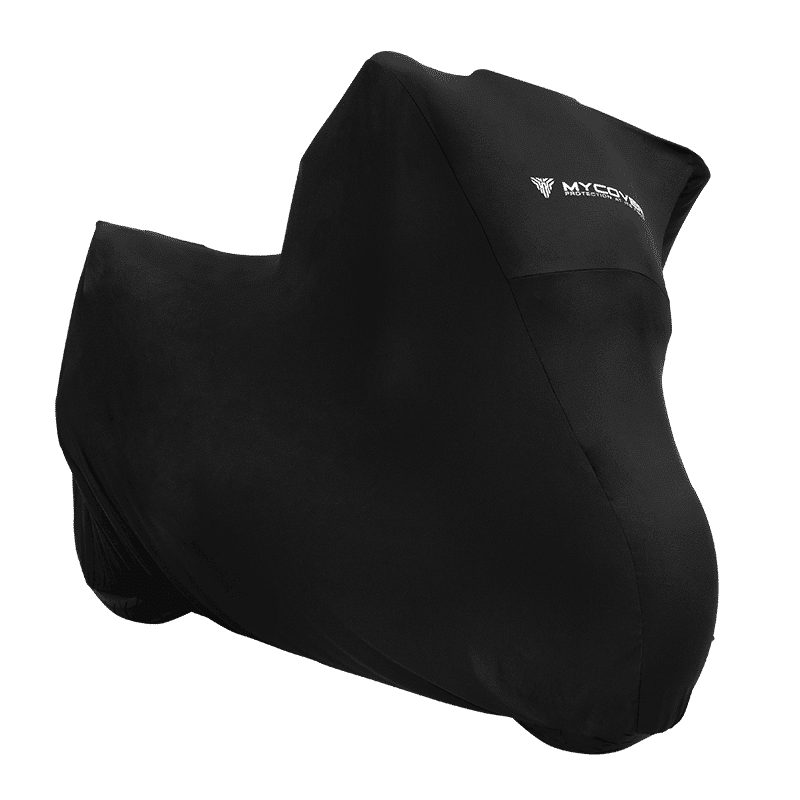Cleaning the cooling system: how to do it properly
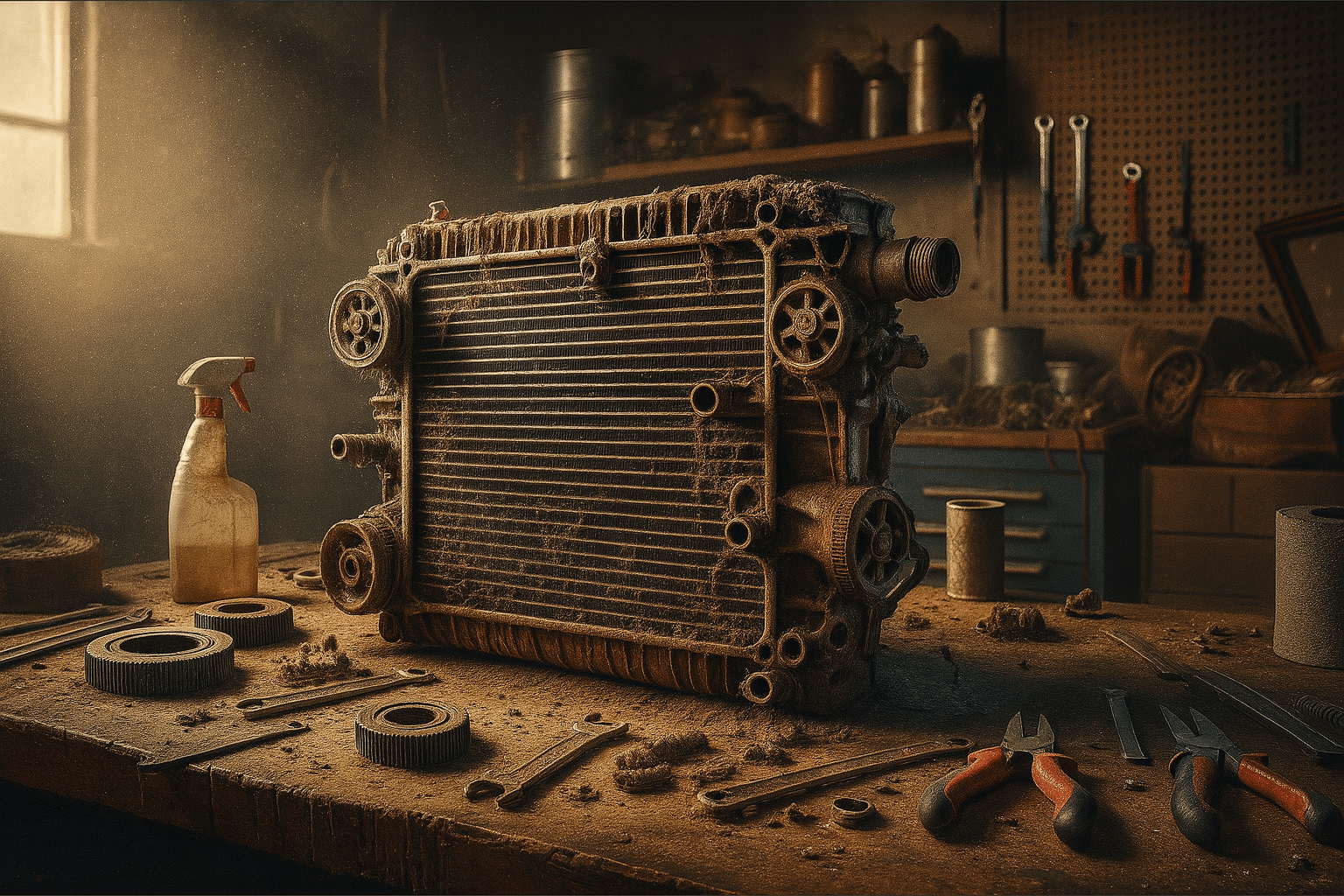
Cleaning your cooling system is crucial to keep your motorcycle running optimally. The motorcycle radiator ensures that the engine remains at the ideal temperature and prevents overheating. However, dirt, flies and limescale can build up over time. You can find out how to clean the motorcycle radiator, both inside and out, here. With simple tips, household remedies and special cleaners, you can get your cooling system back in top form.
The MYCOVER® team clarifies!
Table of Contents
- Why is it important to clean the radiator?
- Recommended accessories for optimum protection
- Step-by-step instructions: Cleaning the motorcycle radiator
- Clean motorcycle radiator and cooling system efficiently
- Conclusion: What you should take away from radiator cleaning
- FAQ – Frequently asked questions about cleaning the cooling system

Why is it important to clean the radiator?
A dirty motorcycle radiator significantly reduces the cooling capacity. Flies and dirt get stuck in the fins, while limescale and deposits contaminate the inside of the cooling system. This can lead to overheating or even damage. You should therefore clean the motorcycle radiator regularly so that your motorcycle always remains ready for use.
Recommended accessories for optimum protection
Here’s our recommendation: A high-quality Motorcycle cover is a simple and effective way to protect the radiator and the entire motorcycle from dirt, moisture and UV rays. Keep your vehicle in top condition, even when it’s not in use!
Step-by-step instructions: Cleaning the motorcycle radiator
1. preparation
Before you start, let the bike cool down. Make sure you have access to the necessary tools and cleaning agents. You can use special products or simple home remedies to clean your motorcycle radiator.
2. exterior cleaning: Motorcycle radiator exterior cleaning
To remove flies and dirt from the fins, rinse the radiator with a gentle jet of water. Use a soft brush to clean the motorcycle radiator fins without bending them. You can remove stubborn dirt with a special motorcycle radiator cleaner. Make sure that the sensitive slats are not damaged.
3. interior cleaning: Rinsing the cooling system
To be able to clean the cooling system, you need access to the cooling water tank. You can remove deposits on the inside with a cleaner such as Liqui Moly Radiator Cleaner Motorcycle. Alternatively, you can also use household remedies such as a mixture of vinegar and water. Allow the liquid to circulate in the cooling system before draining it completely. Then rinse the system thoroughly with clean water.

Clean motorcycle radiator and cooling system efficiently
Regular motorcycle radiator cleaning and motorcycle radiator cleaning prevent overheating and increase the efficiency of your engine. Cleaning the water cooler should also not be neglected, as it is crucial for temperature regulation. A clean radiator on a motorcycle means less wear and tear and a longer engine life.
Conclusion: What you should take away from radiator cleaning
Cleaning the cooling system is one of the most important maintenance tasks on your vehicle. Regardless of whether you clean the motorcycle radiator from the inside or outside, with the right tips and tools you can ensure optimum performance. We also recommend using a high-quality Motorcycle covers to protect your motorcycle and the cooling system in the long term.
Make provisions now:
FAQ – Frequently asked questions about cleaning the cooling system
Why should I clean my motorcycle radiator regularly?
Over time, dirt, insects and limescale build up on the fins and in the cooling system, which reduces the cooling capacity. A dirty radiator can lead to overheating and thus damage the engine. Regular cleaning therefore ensures optimum cooling and extends the service life of the engine.
How do I clean the motorcycle radiator properly – inside and out?
Inside: Rinse the cooling system with clear water or a special radiator cleaner. A mixture of vinegar and water can also dissolve deposits.
Outside: Rinse the radiator with water and use a soft brush to carefully remove dirt from the fins.
How can I protect the radiator from soiling in the long term?
A Motorcycle covers helps to protect the radiator from dirt, moisture and UV rays when the motorcycle is not in use. The cooling system should also be serviced regularly and the coolant changed in accordance with the manufacturer’s instructions.
What is the best way to clean the radiator?
The most effective method is lukewarm water with a light jet of water, e.g. from a watering can or a garden hose without a pressure attachment. Avoid high-pressure cleaners or aggressive cleaning agents, as they can bend the fine fins or damage the radiator mesh.
How do I get insects and dirt out of the radiator?
Place a wet microfiber cloth on the soiled area for a few minutes to soften the insects. Then carefully remove them with a soft brush or a soft toothbrush. Never use sharp objects to help, as this will damage the cooling fins.
Can I clean the motorcycle radiator with a high-pressure cleaner?
No, high-pressure cleaners are taboo. The hard jet can bend the sensitive cooling fins or even damage the radiator mesh. Instead, use gentle water pressure, patience and soft tools such as a brush or cloth.
How often should I clean the radiator?
We recommend thorough cleaning every few weeks, especially during the insect season or after driving on country roads and under heavy loads. Regular cleaning means less deep cleaning and full cooling performance.
What to do if the cooling fins are bent?
Slightly bent slats can be carefully straightened using a fine plastic comb or a slat straightening tool. This is only possible as long as the slats are not torn. In the case of severely damaged areas, it is better to contact a specialist company.
Which brush is suitable for cleaning radiators?
A soft natural bristle brush or a special detail brush for motorcycle care is ideal. It should be flexible and not too hard so as not to damage the sensitive lamellae. Toothbrushes with soft bristles are an inexpensive alternative.
What should I bear in mind when drying the radiator?
Allow the radiator to air dry, preferably in a light breeze or in the shade. Never use compressed air or heat sources to help. Before the next ride, check whether there are any water residues or loose foreign bodies in the radiator area.
